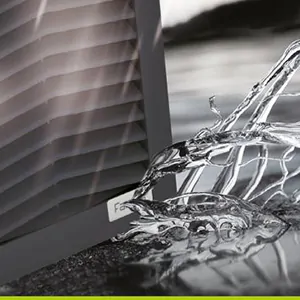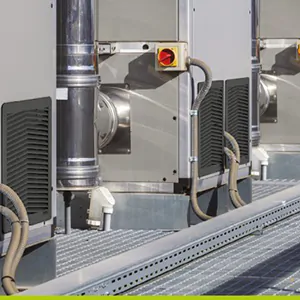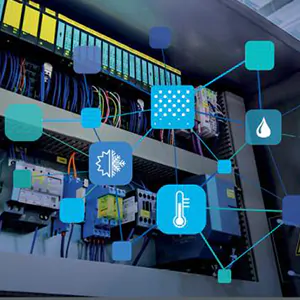A Guide To Enclosure Cooling
Our guide explains enclosure ventilation fan selection, the required air flow and how to control condensation.
Installing cooling fans to ventilate and protect electrical equipment inside enclosures may seem to some as simply just another cost to cut. However, the cost of a proficient cooling fan unit is near inconsequential when compared to the cost of the equipment, labour and interruption to replace a failed inverter. The overheating of expensive equipment through failing to provide active enclosure ventilation is by far the main cause of failure within electrical cabinets. In addition, effective enclosure ventilation significantly increases the lifespan and energy efficiency of equipment as well as protection from dust and water splashes.
Fan Selection
The simple answer for electronic cooling inside cabinets and control panels lies in a combined fan and filter unit. Fan filter kits have been in use for around 20 years and are now considered part of the scenery and used in a whole host of enclosures and cabinets to facilitate the effective running of the equipment it is housed in. Over this time their function has not changed, so in cooling the enclosure and its components their role is still as useful as ever, if not a vital part of the design of the system. However, if the wrong product is selected, the whole control cabinet may overheat and compromise not only the value of the equipment it contains, but also the panel’s primary function, powering a whole process plant, shopping centre or datacentre. The impact of this could be catastrophic so it pays to seek advice and assistance when selecting a system for your power electronics cooling.
Selecting a cooling fan for electronics is often made to be more complicated and expensive than necessary with overblown software programs giving manufacturers specific solutions. The main points of consideration are the maximum ambient temperature that the components can tolerate and the equipment heat loss figures. A simple equation can then be used which takes into account the air density and then determines the required air volume flow rate.
For basic level enclosure ventilation, the industry offers a range of fan filter units, for ease of installation these feature click-fit chevron louvered panels. As an example, Axair Fans offer these in three different variants designed to filter air at various rates. The fitted cooling fans should be of ball bearing construction and not sleeve and often neglected is the ease of which the filter media can be removed. The cover should be easy to remove to access the filter media, if the mechanism is not straight forward then this risks the probability that it will not get changed. Inevitably resulting in problems in the long run.
Unique to Axair’s filter fan range is the slanted chevron design of the louvres on both the inlet (fan filter unit) and outlet (exhaust). This feature improves water resistance by facilitating water runoff; moisture that accumulates on the surface of the louvres falls sideways and then away from the inlet or outlet rather than remaining on the surface.
Air Flow
In a standard fan filter unit the fan sucks air into an enclosure, first through the louvre, then the filter. Warm air exits through a filter louvre, generally of the same dimensions as the inlet, but larger if necessary to improve the flow rate.
Where the required minimum flow rate is not available from an integrated fan and filter there is an enormous range of axial and centrifugal fans to choose from, either in standard form or within roof mounted units. In some cases it is possible to take a high performance fan and use it in conjunction with a number of standard filters, sized to achieve the ideal airflow whilst coping with the ingress protection requirement IP54 or IP55. For hot spot cooling you may look to use either frame axial fans or small centrifugal blowers.
Recent developments also mean that two additional fan solutions aimed at the control panel industry can be used, by using backward curved centrifugal motorised impellers either in ‘reverse’ configuration or assembled as a ‘fan module’.
Backward curved centrifugal fans overcome high resistance to air flow and can operate without a space consuming scroll housing and crucially are pre-assembled for ease of mounting, saving time and cost.
Condensation Control
Outdoor equipment is particularly prone to condensation given the change in temperature as daytime warmth turns to the cold of the night. Condensation may also form in indoor enclosures when humidity levels are too high and temperatures vary. It occurs when warm moist air comes into contact with cooler surfaces. This can cause electrical equipment housed within enclosures to fail prematurely.
Condensation will only form at, or close to Dew point (65% humidity), but oxidation / rusting can take place at medium levels of relative humidity at 60% depending on the type and levels of contaminants in the air /water mixture.
By keeping an enclosure at a temperature slightly higher than that of the ambient temperature, condensation can be eliminated. The warmer the air, the more water vapour it can contain. When air is cooled it can no longer hold the water vapour and reaches its dew point – this is where condensation arises.
The most effective solution to prevent condensation includes heaters, hygrostats, thermostats and pressure compensation devices. Heaters are typically applied to enclosures to ensure they stay above the minimum operating temperature and to control condensation formation.
Summary
In summary, there is an answer to every problem of enclosure ventilation but at the extreme there is a need to utilise or combine standard products to make special solutions. For full thermal management components, see our enclosure product pages. We offer filter fans, heaters, thermostats, compact fans, lights, guards and other accessories.


